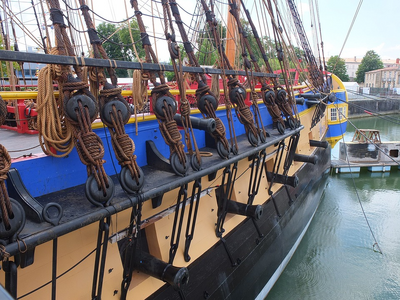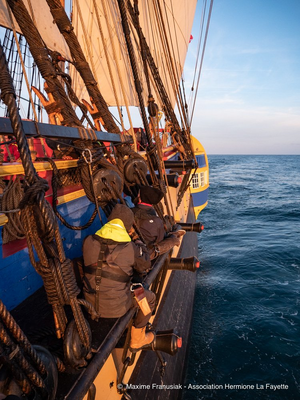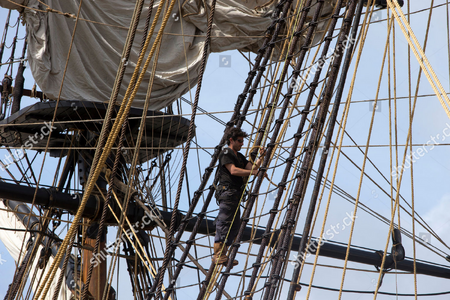The colors are beige or tan or light colored, Brown or Dark Brown and Black.
Why would one use the brown color? Thank you,
Why would one use the brown color? Thank you,





I don't see why not. I've had a few people use both colors on their builds. John Aliprantis on YouTube has been using both my black and dark brown ropes.Guess I can use it to replace black when I want to. Right?

Here's the thing: looking at an object up close (e.g. a full-size vessel), the colors look one way. If you look at it from a distance, the colors look different. Artists call this color recession. Take a look at a good landscape painting and you'll see the color of the trees in the foreground is different than the color of those in the background. In the real world, this is caused by particulates and water vapor in the air. In general, warm colors (red and yellow) drop out with distance and objects look cooler (more blue) and lighter. What has this to do with model ships? To your eyes and brain looking at a model ship up close is like looking at a full-size ship at a distance. Therefore, to look "realistic" the colors should be somewhat lighter, muted, and dull. This is where Uwek's reference to personal taste comes in (what does your eye tell you about realism?) And please, no glossy paint.and to be honest to ourself
it is also a question of personal taste modelers are deciding, independent of the technical correct colour
The "tar" used on standing rigging was a dark reddish brown before the late 1800's when petroleum/asphalt was being used which was much closer to black.The colors are beige or tan or light colored, Brown or Dark Brown and Black.
Why would one use the brown color? Thank you,
When I was (much) younger, I was into building and correctly painting plastic model aircraft. At the time, those of us in IPMS (International Plastic Modeler's Association) were very much into "Scale Color". The idea that the smaller the scale (like 1/144) models should have consistently faded-looking paint compared to larger scale (like 1/32). I and others felt very strongly about this, but it has mostly seemed to be lost to time to most (or considered a terrible hoax by some). I ALWAYS lightened the paint on my models, based on scale, even after I thoroughly researched the exact and proper shade of paint, lightening with white, or sometimes light gray.Here's the thing: looking at an object up close (e.g. a full-size vessel), the colors look one way. If you look at it from a distance, the colors look different. Artists call this color recession. Take a look at a good landscape painting and you'll see the color of the trees in the foreground is different than the color of those in the background. In the real world, this is caused by particulates and water vapor in the air. In general, warm colors (red and yellow) drop out with distance and objects look cooler (more blue) and lighter. What has this to do with model ships? To your eyes and brain looking at a model ship up close is like looking at a full-size ship at a distance. Therefore, to look "realistic" the colors should be somewhat lighter, muted, and dull. This is where Uwek's reference to personal taste comes in (what does your eye tell you about realism?) And please, no glossy paint.
Fair winds!
